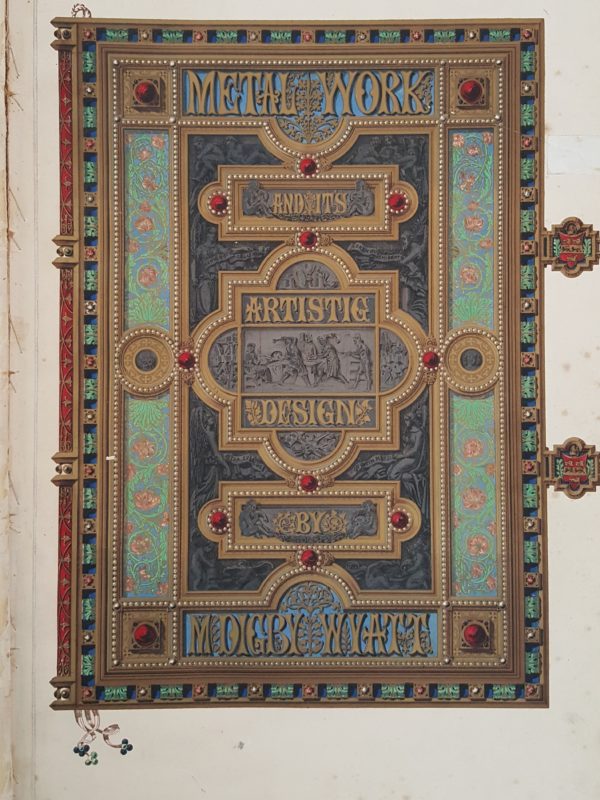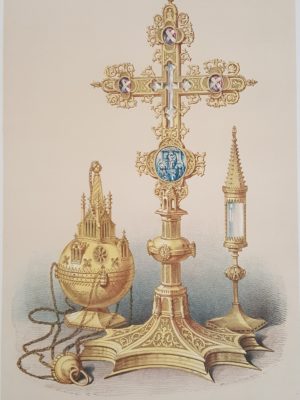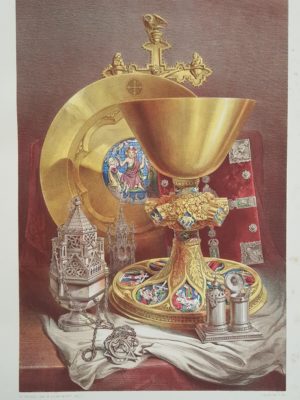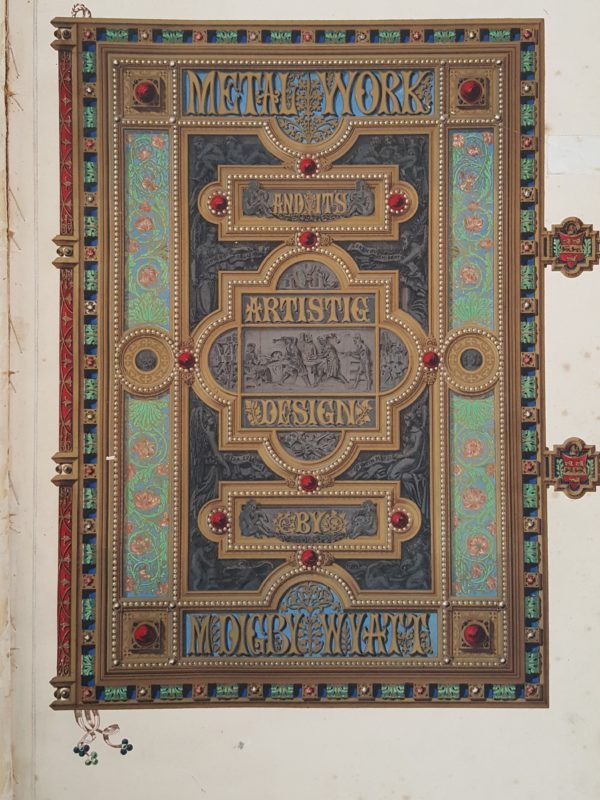
Frontispiece of Metal-work and its artistic design
He is most famous for his two-volume work, The Industrial Arts of the Nineteenth Century, written while he was Secretary of the Great Exhibition of 1851. His research and connections with the Archeological Institute and the Society of the Arts worked two-fold: creating a historical and [his] contemporary framework and devising an artistic process for the valuable metals with craftsmanship that had been lost from centuries past.
Metalwork and its artistic design… in the Cooper Hewitt Library’s collection is an illustrated manual with detailed analysis on the metalworking process focusing specifically on gold, silver, bronze, and iron. This important and early guide was instrumental in pioneering the industrial design profession. 50 illustrations demonstrate the wide variety of metalwork production.

Reliquaries and Thurible from the Church at Graefurt, near Dusseldorf. Plate 8
This book expresses Wyatt’s appreciation of not only the design, but the use and effort of the material itself. He presents English, French, Italian, Sicilian, German, Flemish and Spanish works and delves into the history of the process within each country.
Wyatt demonstrates the artistic excellence and capacity of each metal by exploring the techniques and styles determined by their respective malleability. He stresses the collaboration between the artists design and the execution of the piece, allowing the art to becoming the metalworking process itself. By exploring the constraints of the metal, the artist can expand and manipulate it to fit into the perfect design. Wyatt offers useful and aesthetically pleasing examples of metalwork as seen in the intricately designed frontispiece. The vibrant colors and typography of the plate are an attempt to represent a precious book cover that combines several decorative process used to amplify the visual effect of metalwork. Combining several artistic techniques, it is a composite of the book’s study, merging the practices of several artistic regions and designs.

Enameled chalice and paten from the Treasury of Mayence Cathedral. Plate 49
This book is listed in Smithsonian Libraries’ Adopt-a-Book Program, which provides essential funding to support the conservation, acquisition, and digitization of books and manuscripts and can be adopted online. Metal-work and its artistic design is one of the books available for adoption that needs support for preservation treatment. Written by Nilda Lopez, Library Technician
